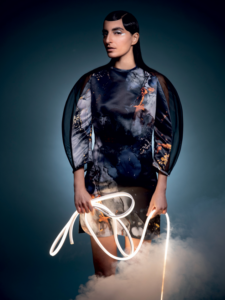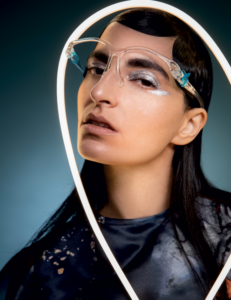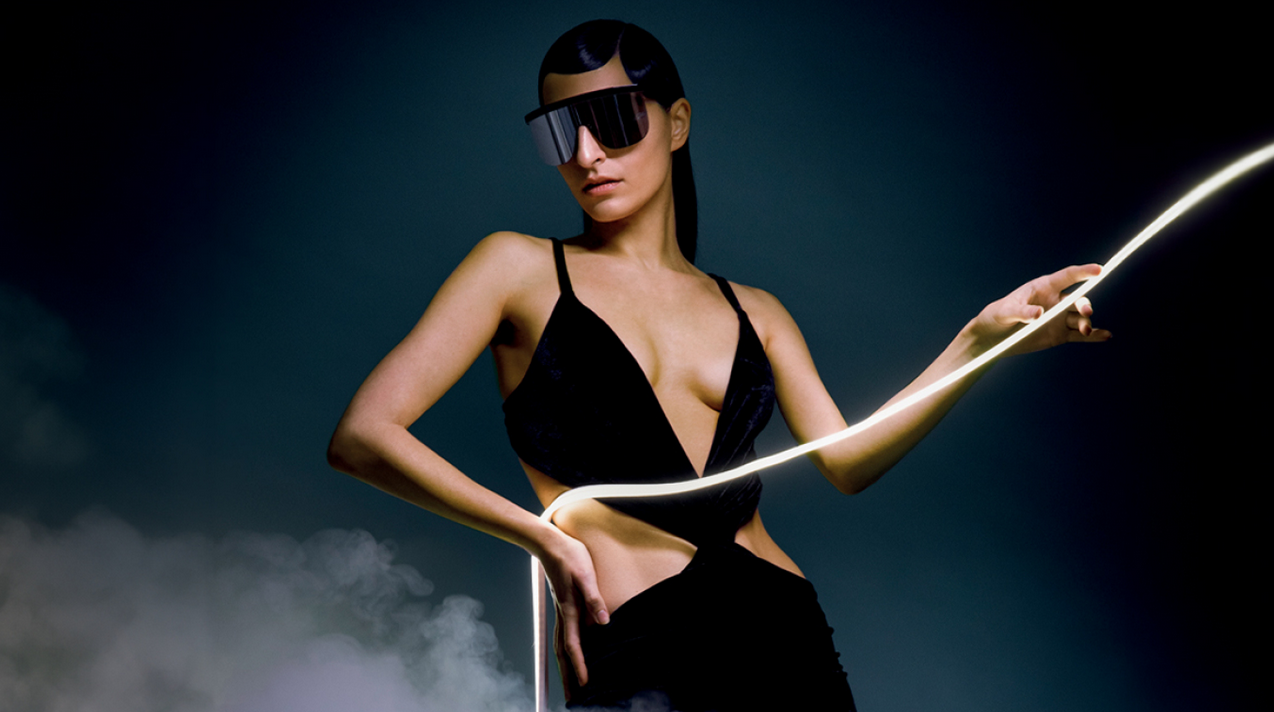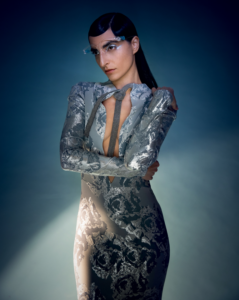The theft of Nasia Matsa’s face has come to remind and highlight the shift of companies and brands towards the use of non-existent models. Not because of their unreal proportions or extravagant beauty, but because they are made from bits and bytes. Already in 2023, Levi’s launched its first campaign featuring post-humans, models created on Lalaland.ai’s computers. This studio specializes in creating all kinds of models in any size, color, and characteristics desired by the client – now favoring “diversity” and “inclusiveness” – with prices starting from just 600 euros per month. Who knows if for the Naomi, Cindy, Bella, or Gigi of the future, we should not praise the genes of their parents’ union, but the creativity, and above all, the computational power of the algorithm?
The issue of using Artificial Intelligence is already a concern in Hollywood. During the recent five-month strike of screenwriters, the just struggle supported by actors, one of the main demands was the establishment of rules for the use of AI by film studios and on-demand platforms, which now have the upper hand.

Screenwriters are concerned that Chat GPT and similar machines will eventually replace or, at the very least, undermine their work since it’s humanly impossible to meet the demands of the mass production of television series. Actors, on their part, tremble at the mere idea that digital stunt doubles, just as photogenic as themselves, will soon become even more useful than them. Why should studios pay exorbitant sums to actors when they can have their digital holograms, which, as is known, can be programmed not to behave like divas?
A first-rate – and undoubtedly self-referential – comment on the ethical but ultimately practical issue that has arisen in the entertainment industry due to Artificial Intelligence was experienced by Salma Hayek. Or rather, the protagonist of the first episode of the sixth season of the series “Black Mirror”. In “Joan is Awful,” the Mexican actress and wife of French magnate François-Henri Pinault portrayed a hologram that revived the life and daily routine of a woman named Joan, who had granted an on-demand television platform the right to receive and exploit all her personal data – yes, she hadn’t read the terms and conditions.
The story had a happy ending as the hologram and the person joined forces to dismantle the supercomputer that orchestrated the transfer of real life to the small screen. Things are somewhat different in real life. After all, even in the case of Nasia Matsa, it wasn’t a machine that decided to steal her face and exploit it commercially without her consent. A person had the idea and another person pressed the button.










